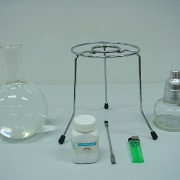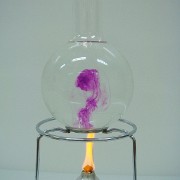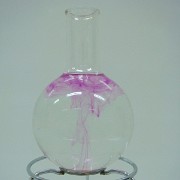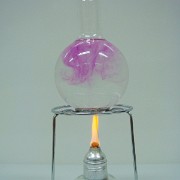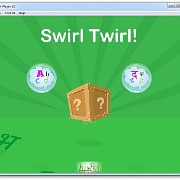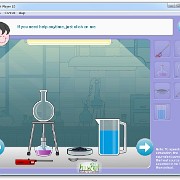Demonstrations
Convection In Water
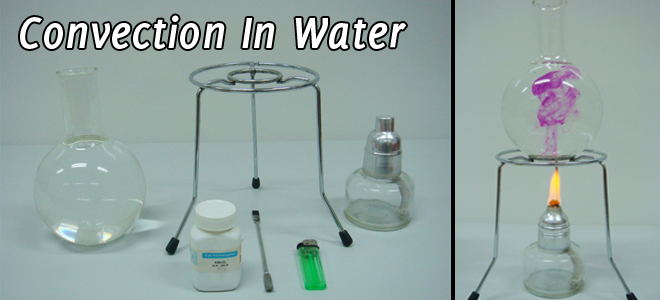
When the water at the bottom of the flask is heated, it expands. The expanded water is less dense than the surrounding water and therefore starts to rise. In doing so, the cooler regions of the water in the upper part of the flask, being denser, sink. This movement of the liquid due to a difference in its density sets up a convection current.
Convection currents occur only in fluids such as liquids and gases but not in solids.
This is because convection involves the bulk movement of the fluids which carry thermal energy with them. For solids, the thermal energy is transferred from one particle to another through vibrations, without any bulk movement of the particles themselves.
Convection In Water
Convection In Water Photos
Click here for more photos in this gallery »
Our video is used in a Hole in the Wall Activity Based e-Learning Game.
In this game firstly a daily life convection sample is shown to you and your opinion is asked. After you make a selection, you are asked to do an experiment of convection in water virtually. After that you can observe the real convection experiment video of PhysicsField.com. When you complete the experiment, you can check your selection that you made at the beginning whether it is true or false. An explanation comes after the experiment about the transfer of heat. Finally you can have a short quiz.
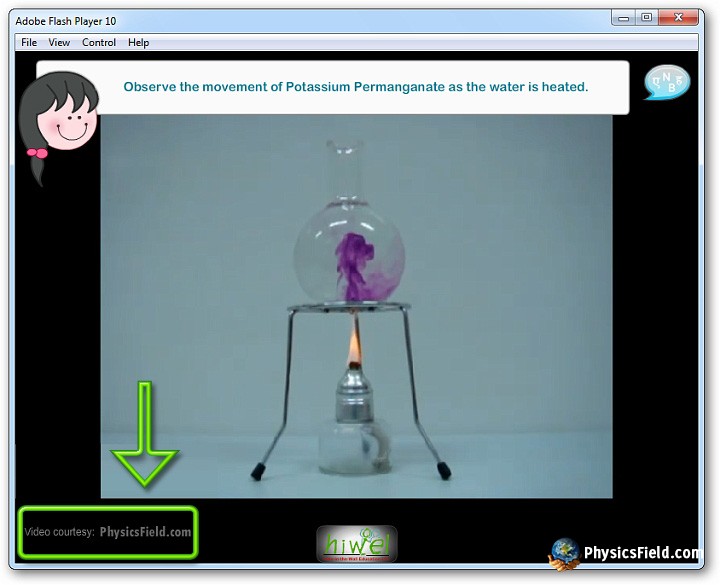
You can download this game from Hole in the wall website. Or directly from here.
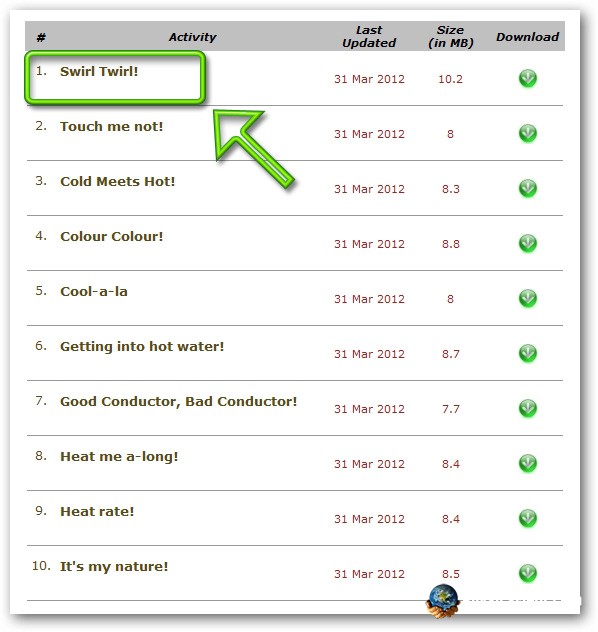
Follow the steps below to see our video.
PhysicsField
DEMOS
demonstrations

